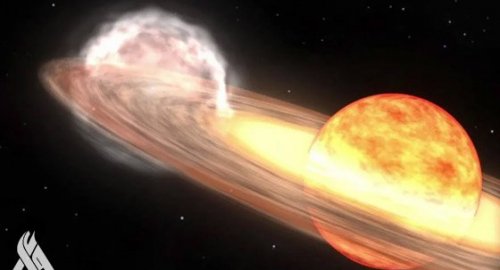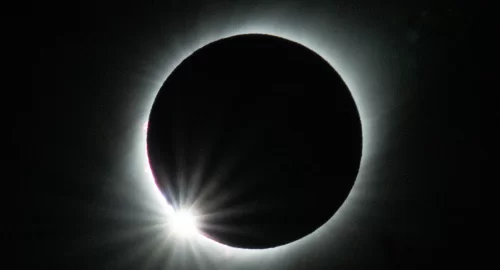
The Blaze Star T Coronae Borealis: A Nova Set to Explode Any Night in 2024

- 20-06-2024, 10:05
INA- sources
Any moment now, a star that was hiding for decades will light up the night sky! A nova eruption is about to occur in the constellation Corona Borealis. That sounds big, and you might be expecting to see a full-sized explosion in the sky, but spoiler alert: the star in question, T Coronae Borealis (T CrB), will be just as bright as the North Star. Still, this is a fascinating event for astronomers and stargazers. Imagine: T CrB was last visible to the naked eye 80 years ago!
So, let’s keep an eye on this "new star." It will also be easy to spot: just use our Star Walk 2 or Sky Tonight apps to guide you. We'll give you all the details on how to make the most out of this historic event.
T Coronae Borealis recurrent nova
The event we're so eagerly anticipating is called a nova, specifically a recurrent nova. Simply put, a nova is the sudden brightening of a star. And a recurrent nova is a nova that happens in cycles of a few decades or less. Don't confuse it with a supernova, which is an explosion of a star when it dies.For T Coronae Borealis, the cycle repeats every 80 years. The star tends to dim slightly for a year before an eruption, and it started dimming back in March 2023. So now, we're waiting for the nova to happen any moment.
T Coronae Borealis nova event 2024
During the nova eruption, the star T Coronae Borealis will brighten from magnitude 10 to 2, which is visible to the naked eye. Here is what you need to know about this event.When will the star explosion take place?
The exact date of the nova explosion is unpredictable, but scientists estimate it could occur anytime between now and September 2024. Astronomers and stargazers around the world are already closely monitoring T Coronae Borealis. Any change in the star's brightness is recorded, and you can follow the T CrB thread on the AAVSO website, where stargazers share their observations. Be careful, however, as sightings may be inaccurate and should be double-checked. To save time, you can simply enable push notifications in our Star Walk 2 or Sky Tonight app. We will notify you as soon as it is confirmed that T Coronae Borealis has exploded.Don't be discouraged if you miss the moment of the explosion. The nova will be visible to the naked eye for several days, and may remain well-seen through binoculars for more than a week.
What will the nova look like?
T Coronae Borealis is expected to brighten up to magnitude 2 during the nova event, making it as bright as the North Star. Sadly (or luckily), we won’t see the eruption from the Earth. The star will look like an ordinary point of light, but it will join the pantheon of the 200 brightest stars in the sky! This is a big change from its current magnitude of 10, where it's barely visible with high-powered binoculars. During the explosion, T Coronae Borealis will be easily seen with the naked eye for a few days.Why does the star erupt?
T Coronae Borealis is actually a pair of stars: a white dwarf and a red giant. And their stellar relationship has its blazing moments! The white dwarf is the dense remnant of a star that has used up all its fuel, while the red giant is still active and heating up. As the red giant gets hotter and sheds its outer layers into space, the white dwarf pulls in that material. This causes the white dwarf to heat up and produce the increased brightness we see from the Earth as a nova.source: Star Walk
First joint picture of Greenland Ice Sheet melting, ESA
- Multimedia
- 09:28
US Central Command: We killed ISIS terrorist leader Abu Yusuf in Syria
- International
- 24/12/20
Liverpool compete with Real Madrid to sign Olympique Lyonnais star
- Security
- 24/12/19
ISC, ADX discuss Strengthening Economic Ties
- Economy
- 24/12/16
Iraq assumes presidency of Arab Investment Company’s Executive Board
- Economy
- 24/12/17












